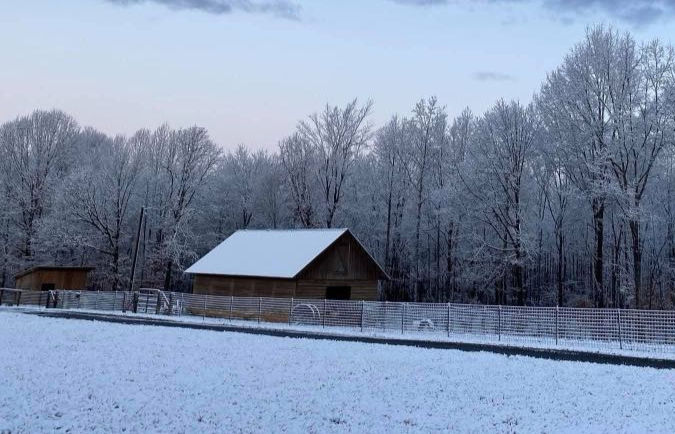KUDZU IN NORTH CAROLINA
- BRIAR CREEK FARM

- Aug 12
- 3 min read

A Tangled Tale of Beauty and Burden
If you’ve driven down a rural road in North Carolina during the summer, you’ve probably seen kudzu — that thick, green vine draping trees, telephone poles, and abandoned buildings like nature’s own heavy quilt. To some, it’s a nostalgic part of the Southern landscape. To others, it’s a symbol of one of the most infamous plant introductions in U.S. history. Kudzu’s story in North Carolina is a fascinating mix of optimism, agriculture, and unintended consequences.
How Kudzu Came to the South
Kudzu (Pueraria montana var. lobata) is native to East Asia, primarily Japan and China. It first arrived in the United States in 1876 at the Centennial Exposition in Philadelphia, where the Japanese government showcased it as an ornamental vine. Americans admired its fast growth, large leaves, and fragrant purple blooms.
In the early 1900s, kudzu began making its way into the Southeast, especially North Carolina, promoted by plant enthusiasts and agricultural experiment stations as a decorative shade plant for porches and gardens. Its lush foliage made it popular among gardeners, and its deep root system made it appealing for erosion control.

The Push for Kudzu Farming
The real turning point came during the 1930s and 1940s, when the U.S. government actively encouraged farmers to plant kudzu. The Dust Bowl had made soil erosion a national crisis, and the Soil Conservation Service saw kudzu as a cheap, fast-growing solution.
Through government programs, including the Civilian Conservation Corps (CCC), thousands of young men planted kudzu along highways, railroad embankments, and farmlands across North Carolina and the South. Farmers were even offered up to $8 an acre — a considerable sum at the time — to plant it.

Why Kudzu Thrived in North Carolina
Kudzu seemed perfect for the Piedmont and Coastal Plain: it loved the warm climate, grew rapidly, and fixed nitrogen in the soil, making it self-sustaining. In fact, during peak summer conditions, kudzu can grow up to a foot per day and stretch 60 feet in a single growing season. This incredible growth rate allowed it to quickly cover entire hillsides, smother large trees, and blanket any stationary object in its path.
But what the government didn’t anticipate was just how aggressively it would spread without its natural insect and fungal enemies from Asia. By the 1950s and 60s, kudzu had escaped farms and highway embankments, overrunning forests, abandoned fields, and even small towns. It smothered native plants, climbed trees until they collapsed, and altered habitats for wildlife. In 1972, the U.S. Department of Agriculture officially declared kudzu a weed.

Kudzu Today in North Carolina
Today, kudzu covers an estimated 150,000+ acres in North Carolina alone. It remains a problem for farmers, foresters, and landowners, as it can quickly overtake usable land, often reclaiming cleared areas within a single season if not controlled.
Control methods include mowing, grazing by goats, herbicides, and persistent cutting over multiple years — all necessary because of the plant’s relentless ability to regrow from its extensive root system.
Interestingly, kudzu isn’t entirely without modern uses. Researchers have studied it for potential medicinal benefits, biofuel production, and even as a food source (its flowers can be made into jelly, and the root is edible). But for most North Carolinians, kudzu is still the “vine that ate the South,” a cautionary tale of what can happen when a well-intentioned idea runs wild.
DISCLAIMER: The photos within this article were taken by Bobbette Fagel on August 12, 2025 on Schoolfield Rd. Thankfully, kudzu is not on the property of Briar Creek Farm. If it does appear, all eradication measures will be taken so that the overgrowth does not occur!





Comments